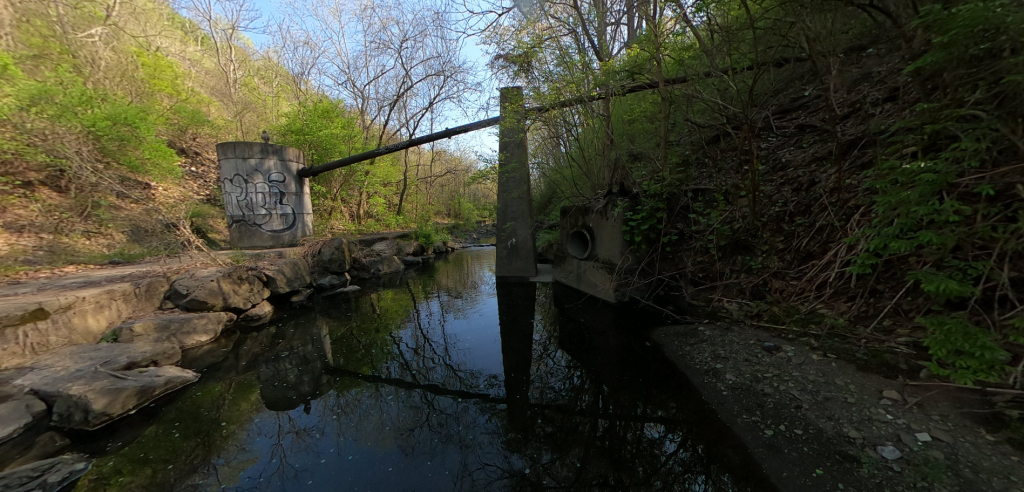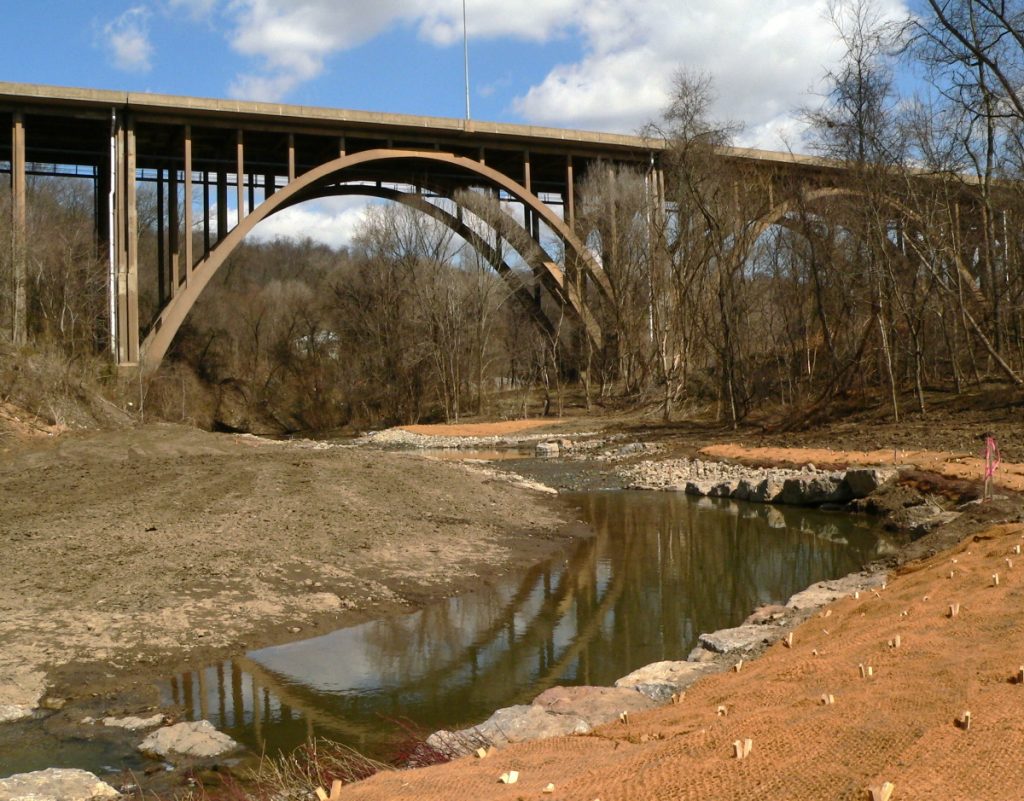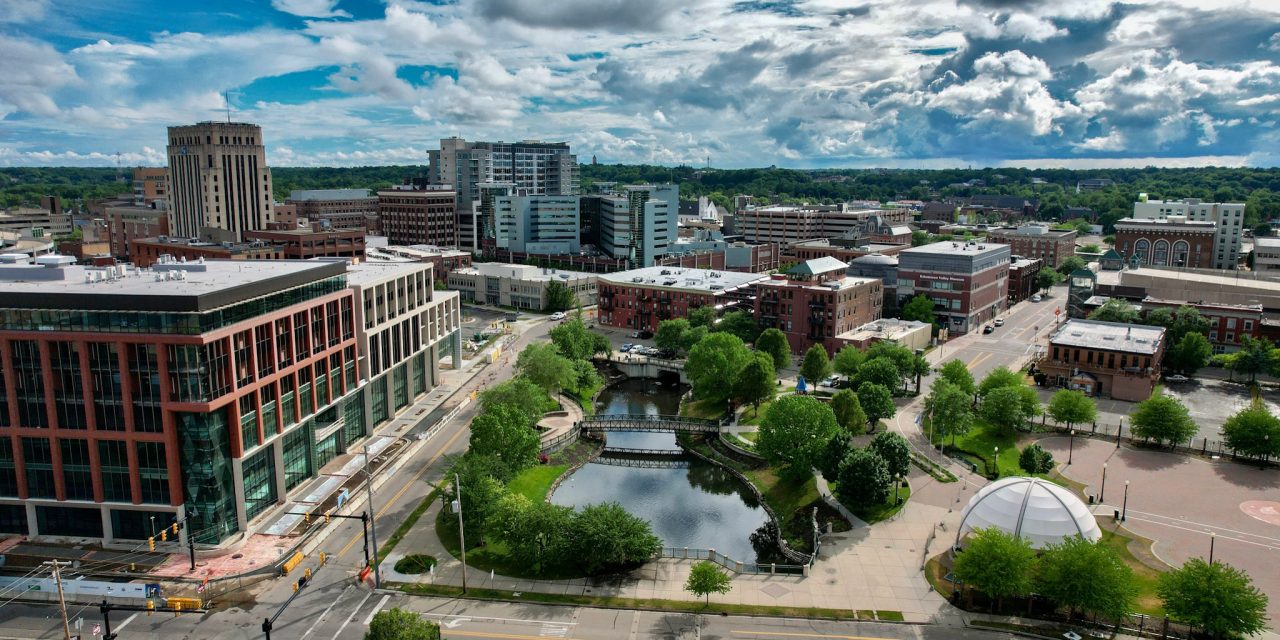Watershed managers seeking a natural way to absorb rainfall might try looking to the past — and under their feet — to stream daylighting.
Daylighting is the process of reviving hidden waterways that were previously redirected underground by bringing them back to the surface. Small streams were commonly buried during the late 18th and 19th centuries during periods of rapid industrialization and urban development. Due to a lack of awareness about their benefits for water quality and flood control, cities frequently utilized these streams as parts of early wastewater collection systems. As a result, many urban areas today contain far fewer visible streams than they originally had. By removing concrete culverts and other coverings, daylighting attempts to restore the original flow of surface waters and the ecosystem that surrounds them.
The benefits of daylighting include, for example, improved flood management during extreme weather events, less runoff entering combined sewer systems that in turn reduces the likelihood of overflow events, and better aesthetics, describes Aaron Birdy, Plan and Build Manager with UpstreamPgh, a Pittsburgh-based non-profit organization focusing on water management. After all, a clean, free-flowing stream often is far more attractive than a concrete culvert.
“People are generally healthier and happier being around greenspace rather than gray and concrete that we’re used to in the cities,” Birdy said.
Pittsburgh is one of several U.S. cities — including Detroit, Kalamazoo (Michigan), Dubuque (Iowa), and dozens more — that have undertaken large-scale stream daylighting projects. As the number of communities that pursue these projects continues to grow, stormwater professionals are increasingly recognizing the ecological and economic benefits of restoring buried streams to the surface.
Successes at the Surface
Today, Pittsburgh’s 18-km2 (7-mi2) Nine Mile Run watershed is lush with trees and wetlands where fish, ducks, and other wildlife make their home in and by the water. However, in the early 2000s, much of the watershed was a large slag dump choked with polluted runoff as a result of local steel-industry operations.

“There was a ton of slag to get rid of and the way that they got rid of it was essentially just dumping molten slag into stream valleys because it was a place that you could lose all that material,” said Birdy.
The watershed’s restoration was largely completed in 2006 with the help of the U.S. Army Corps of Engineers and UpstreamPgh, known at that time as the Nine Mile Run Watershed Association.
Daylighting Nine Mile Run — a creek buried, converted into a culvert, and connected to Pittsburgh’s combined sewer system during the early 1900s — was a crucial piece of the project’s rehabilitation approach, which also included work to restore the watershed’s wetlands, surface-level streams, and riparian habitats, as well as control invasive species. Decoupling the Nine Mile Run culvert from underground collection systems required an extensive campaign to eliminate unmapped connections between the culvert and wastewater conveyance networks.
“That restoration was done to improve the hydrology and habitat, improve the water quality and in addition to that, there was a lot of work done to separate the sewers from that storm network,” said Birdy.
Work to fully eliminate wastewater flows through the now-daylit Nine Mile Run is still ongoing, Birdy said. Although dye testing enabled watershed managers to identify and disconnect most connections between the stream and collection systems, monthly bacteria sampling often still finds fecal coliform bacteria, an indication that additional unmapped connections remain.
While daylighting Nine Mile Run has been costly, its environmental benefits have proven persuasive despite remaining these remaining traces of its history. However, in Kalamazoo, similar work has demonstrated that daylighting streams can also be financially prudent.

In 1995, the city uncovered 472 m (1,550 ft) of Arcadia Creek, which had been hidden for a century and used as a wastewater collection system, according to American Rivers (Washington, D.C.).
The stream was underground, which caused frequent flooding due to an undersized containing culvert. Stormwater regularly surpassed the pipe’s capacity, drowning the declining business district. Instead of replacing the culvert, city engineers discovered that daylighting the creek would be a more cost-effective solution.
During the redevelopment project, five large blocks of Arcadia Creek were revealed — three blocks of concrete-lined channel and two of open, grassy pond, according to Seven Canyons Trust (Salt Lake Valley, Utah). Because of the urbanized location, there was no room for a naturalized channel. To address this, a system of weirs and swales were placed to reduce water speed. This process allows the creek to deposit sediment, which can be removed to improve water quality.
To fund the revitalization, bonds were issued based on tax-increment financing, and prominent downtown businesses were enlisted to invest in the area. Soon, the USD $18-million investment resulted in a total of $200 million in private development. Annual property tax revenues near Arcadia Creek increased annually from $60,000 to $400,000. The end point of the creek, which was formerly a parking lot, generates an estimated $12 million per year from five major festivals.
Proceed With Caution
Despite the numerous advantages of daylighting, there are challenges involved in these projects.

Urban streams are often hidden under concrete, often requiring extensive excavation for which watershed managers must secure funding. Further, as restoring the surrounding floodplain is crucial in order to maximize the ecological benefits of daylighting, finding enough land fit for redevelopment to make daylighting worthwhile also presents challenges. After the daylit stream returns to the surface, agencies must also coordinate to determine ongoing maintenance responsibilities, which can entail additional costs and staff resources.
The U.S. Environmental Protection Agency urges watershed managers considering daylighting to also consider a variety of technical aspects concerning flow rate, water depth, and flow variation that will directly affect the success of daylighting projects. These include, for example
- the stream’s water source;
- whether there is enough water to maintain a constant flow;
- the location of the stream’s flood plain;
- the stream bank’s stability; and
- the potential to integrate the stream into upstream and downstream connections.
Top image courtesy of Discover Kalamazoo

ABOUT THE AUTHOR
Michelle Kuester is a staff member of the Water Environment Federation, where she serves as Associate Editor of Stormwater Report and Water Environment & Technology magazine. She can be reached at mkuester@wef.org.




